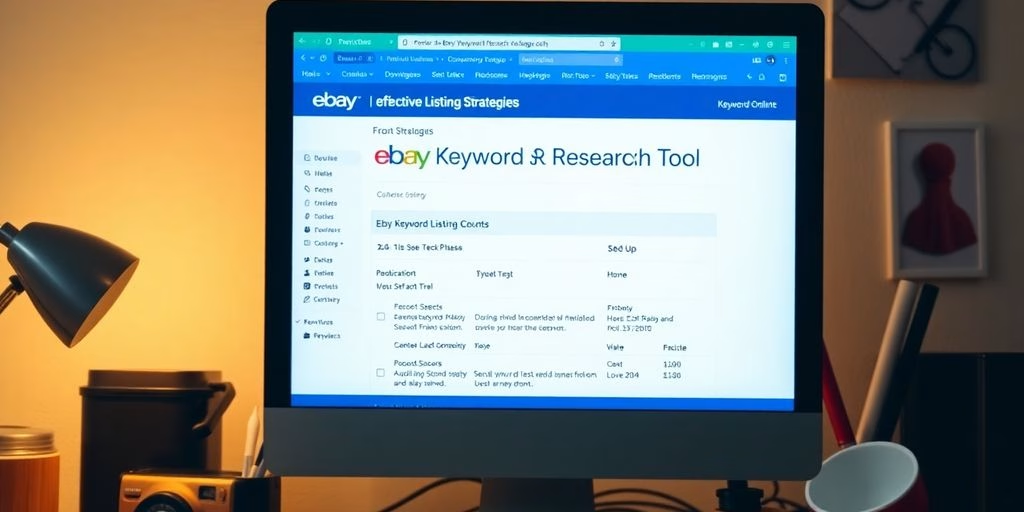Menentukan target audiens Anda adalah langkah penting bagi bisnis apa pun yang ingin sukses di pasar yang kompetitif saat ini. Dengan memahami siapa pelanggan Anda, Anda dapat menyesuaikan strategi pemasaran dan membuat konten yang benar-benar sesuai dengan mereka. Panduan ini akan memandu Anda melalui pentingnya mengidentifikasi audiens target Anda, langkah-langkah untuk melakukannya, dan cara menyesuaikan pendekatan Anda dari waktu ke waktu untuk hasil terbaik.
Daftar Isi
BeralihHal-hal Penting yang Dapat Dipetik
- Mengetahui target audiens Anda adalah kunci untuk pemasaran yang sukses.
- Ikuti langkah-langkah yang jelas untuk mengetahui siapa pelanggan ideal Anda.
- Gunakan penelitian dan data untuk membuat pilihan yang tepat.
- Buat profil pelanggan Anda secara mendetail untuk memandu upaya pemasaran Anda.
- Perbarui pemahaman Anda tentang audiens Anda secara teratur seiring dengan perubahan tren.
Memahami Pentingnya Menentukan Target Audiens Anda
Mengapa Target Audiens Penting
Menentukan target audiens Anda sangat penting untuk bisnis apa pun. Mengetahui siapa yang ingin Anda jangkau membantu Anda membuat pesan yang beresonansi dengan mereka. Ketika Anda memahami audiens Anda demografi-seperti usia, jenis kelamin, dan lokasi-Anda dapat menyesuaikan upaya pemasaran Anda secara efektif. Pendekatan yang ditargetkan ini dapat menghasilkan keterlibatan yang lebih baik dan tingkat konversi yang lebih tinggi.
Kesalahan Umum dalam Identifikasi Audiens
Banyak bisnis yang membuat kesalahan saat mengidentifikasi target audiens mereka. Berikut adalah beberapa kesalahan umum yang sering terjadi:
- Terlalu menggeneralisasi dan mencoba menjangkau semua orang.
- Mengabaikan umpan balik dari pelanggan saat ini.
- Gagal melakukan riset pasar yang tepat.
Menghindari kesalahan-kesalahan ini dapat membantu Anda memfokuskan strategi pemasaran Anda dan terhubung dengan orang yang tepat.
Manfaat Mengetahui Audiens Anda
Memahami target audiens Anda menawarkan beberapa manfaat:
- Peningkatan Loyalitas Pelanggan: Ketika pelanggan merasa dimengerti, mereka cenderung untuk kembali.
- Strategi Pemasaran yang Lebih Baik: Pesan yang disesuaikan akan menghasilkan kampanye yang lebih efektif.
- Tingkat Konversi yang Lebih Tinggi: Pemasaran yang ditargetkan dapat meningkatkan penjualan secara signifikan.
Mengetahui audiens Anda bukan hanya tentang menjual; ini tentang membangun hubungan yang langgeng.
Dengan menentukan target audiens Anda, Anda menyiapkan panggung untuk pemasaran yang sukses dan pertumbuhan bisnis. Pemahaman ini memungkinkan Anda untuk membuat konten yang benar-benar sesuai dengan kebutuhan dan keinginan pelanggan, yang pada akhirnya akan menghasilkan bisnis yang lebih sukses.
Cara Menentukan Target Audiens
Mengidentifikasi audiens target Anda sangat penting untuk pemasaran yang efektif. Berikut adalah langkah-langkah untuk membantu Anda menentukan pelanggan ideal Anda:
Menganalisis Basis Pelanggan Anda Saat Ini
- Tinjau Riwayat Pembelian: Lihatlah siapa saja yang telah membeli produk atau layanan Anda.
- Identifikasi Karakteristik Umum: Catat demografi seperti usia, jenis kelamin, lokasi, dan perilaku pembelian.
- Mengumpulkan Umpan Balik: Gunakan survei atau formulir umpan balik untuk mengetahui alasan mereka memilih bisnis Anda.
Memahami pelanggan Anda yang sudah ada memberikan wawasan tentang siapa yang menghargai penawaran Anda dan mengapa, sehingga membentuk fondasi audiens target Anda.
Melakukan Riset Pasar
- Gunakan survei dan kuesioner untuk mengumpulkan data tentang pelanggan potensial.
- Analisis pesaing untuk melihat siapa yang mereka targetkan dan bagaimana caranya.
- Jelajahi forum online dan media sosial untuk memahami minat dan kebutuhan pelanggan.
Riset ini membantu Anda mengidentifikasi kesenjangan di pasar dan peluang untuk bisnis Anda.
Memanfaatkan Umpan Balik Pelanggan
- Kumpulkan umpan balik melalui komunikasi langsung, seperti wawancara atau kelompok fokus.
- Pantau ulasan dan komentar di media sosial untuk mengukur sentimen pelanggan.
- Menerapkan perubahan berdasarkan umpan balik untuk memenuhi kebutuhan pelanggan dengan lebih baik.
Dengan secara aktif berinteraksi dengan audiens Anda, Anda dapat menyempurnakan pemahaman Anda tentang preferensi dan perilaku mereka.
Analisis Demografis dan Psikografis

Memahami Faktor Demografi
Demografi adalah kuantitatif data yang membantu Anda memahami siapa audiens Anda. Ini termasuk:
- Usia: Kelompok usia yang berbeda memiliki preferensi yang berbeda.
- Jenis Kelamin: Pria dan wanita mungkin merespons pemasaran secara berbeda.
- Pendapatan: Mengetahui tingkat pendapatan membantu menyesuaikan penawaran produk Anda.
| Faktor Demografi | Deskripsi |
|---|---|
| Usia | Rentang usia audiens Anda |
| Jenis Kelamin | Pria, wanita, atau non-biner |
| Pendapatan | Tingkat pendapatan rata-rata audiens Anda |
Menjelajahi Karakteristik Psikografis
Psikografi menyelami lebih dalam tentang kualitatif aspek audiens Anda. Ini termasuk:
- Nilai-nilai: Apa yang mereka yakini?
- Minat: Hobi apa yang mereka sukai?
- Gaya Hidup: Bagaimana mereka menghabiskan waktu mereka?
Memahami faktor-faktor ini dapat membantu Anda membuat pesan yang beresonansi dengan audiens Anda. Psikografi memberikan wawasan tentang motivasi dan preferensi mereka.
Menggabungkan Demografi dan Psikografi
Menggabungkan demografi dan psikografi memberi Anda gambaran yang lebih lengkap tentang audiens target Anda. Pendekatan ini memungkinkan Anda untuk:
- Buat persona pelanggan yang terperinci.
- Sesuaikan strategi pemasaran Anda secara efektif.
- Identifikasi celah di pasar yang mungkin terlewatkan oleh pesaing Anda.
Mengetahui demografi dan psikografi audiens Anda sangat penting untuk pemasaran yang efektif. Hal ini membantu Anda terhubung dengan mereka pada tingkat yang lebih dalam, memastikan pesan Anda relevan dan berdampak.
Dengan memahami kedua hal tersebut yang dan mengapa Di balik perilaku audiens Anda, Anda dapat menyusun strategi pemasaran yang benar-benar sesuai dengan mereka.
Alat dan Teknik untuk Riset Audiens
Memahami audiens target Anda sangat penting untuk pemasaran yang efektif. Berikut adalah beberapa metode utama untuk membantu Anda mengumpulkan wawasan:
Survei dan Kuesioner
- Survei adalah cara yang bagus untuk mengumpulkan informasi secara langsung dari audiens Anda. Anda dapat bertanya tentang preferensi, kebutuhan, dan perilaku mereka.
- Gunakan kuesioner untuk mengumpulkan data spesifik yang dapat membantu membentuk strategi pemasaran Anda.
- Pertimbangkan untuk menggunakan alat bantu online seperti Google Formulir atau SurveyMonkey untuk distribusi yang mudah.
Kelompok Fokus dan Wawancara
- Grup fokus memungkinkan Anda untuk terlibat dengan sekelompok kecil orang dari audiens target Anda. Hal ini dapat memberikan wawasan mendalam tentang pemikiran dan perasaan mereka.
- Melakukan wawancara juga dapat membantu Anda memahami perspektif dan motivasi individu.
- Tujukan pada kelompok yang beragam untuk mendapatkan pandangan yang menyeluruh dari audiens Anda.
Analisis Pesaing
- Lihatlah pesaing Anda untuk melihat siapa yang mereka targetkan. Hal ini dapat mengungkapkan celah di pasar yang dapat Anda manfaatkan.
- Analisis strategi pemasaran dan keterlibatan pelanggan mereka untuk mempelajari apa yang berhasil dan apa yang tidak.
- Gunakan alat bantu seperti SEMrush atau SimilarWeb untuk mengumpulkan data tentang kinerja pesaing.
Memahami audiens Anda bukan hanya tentang mengumpulkan data; ini tentang menggunakan data tersebut untuk menciptakan hubungan yang bermakna. Pemasaran yang disesuaikan dapat menghasilkan keterlibatan yang lebih baik dan tingkat konversi yang lebih tinggi.
Dengan menggunakan alat dan teknik ini, Anda dapat secara efektif mendefinisikan dan menyempurnakan audiens target Anda, memastikan upaya pemasaran Anda relevan dan berdampak. Ingat, tujuannya adalah membuat konten yang sesuai dengan kebutuhan dan preferensi audiens Anda, yang mengarah pada hubungan yang lebih kuat dan peningkatan loyalitas.
Mengadaptasi dan Menyempurnakan Target Audiens Anda dari Waktu ke Waktu

Seiring dengan perubahan pasar, begitu pula dengan kebutuhan dan preferensi audiens Anda. Secara teratur memperbarui target audiens Anda sangat penting untuk memastikan pemasaran Anda tetap efektif. Berikut adalah beberapa strategi utama untuk membantu Anda beradaptasi:
Memantau Tren Pasar
- Mengawasi perubahan industri dan perilaku konsumen.
- Gunakan alat bantu seperti Google Trends untuk melihat apa yang populer.
- Ikuti berita dan laporan yang relevan untuk mendapatkan informasi terkini.
Memperbarui Personalia Pelanggan
- Merevisi persona pelanggan Anda berdasarkan wawasan baru.
- Kumpulkan data dari survei dan umpan balik untuk memahami pergeseran preferensi.
- Pastikan persona Anda mencerminkan lanskap pasar saat ini.
Menyesuaikan Strategi Pemasaran
- Bersikaplah fleksibel dan siap untuk mengubah pendekatan pemasaran Anda.
- Uji ide-ide baru melalui pengujian A/B untuk melihat mana yang terbaik.
- Meluncurkan kampanye percontohan untuk mengukur minat sebelum peluncuran penuh.
Ingatlah, memahami audiens target Anda bukanlah tugas sekali jadi. Teruslah menyempurnakan dan memperluas pengetahuan Anda saat Anda mengumpulkan lebih banyak data dan umpan balik. Kaji ulang strategi pemasaran Anda secara teratur berdasarkan wawasan audiens Anda untuk memastikan Anda selalu memenuhi kebutuhan mereka dan melampaui harapan mereka.
Dengan mengikuti langkah-langkah ini, Anda dapat memastikan bahwa upaya pemasaran Anda tetap relevan dan efektif, yang pada akhirnya mengarah pada keterlibatan dan kesuksesan yang lebih baik dalam kampanye Anda. Beradaptasi dengan kebutuhan audiens Anda adalah kunci kesuksesan jangka panjang.
Menguji dan Memvalidasi Audiens Target Anda
Setelah Anda menentukan target audiens Anda, sangat penting untuk menguji dan memvalidasi asumsi Anda. Hal ini memastikan bahwa upaya pemasaran Anda benar-benar efektif dan beresonansi dengan orang yang tepat.
Pengujian A/B untuk Wawasan Pemirsa
Pengujian A/B adalah metode di mana Anda membuat dua versi pesan pemasaran untuk melihat mana yang berkinerja lebih baik. Hal ini dapat membantu Anda memahami apa yang lebih disukai oleh audiens Anda. Berikut adalah beberapa langkah yang harus diikuti:
- Buat Dua Versi: Mengembangkan dua pesan atau iklan yang berbeda.
- Jalankan Tes: Menampilkan setiap versi kepada sebagian audiens Anda.
- Menganalisis Hasil: Periksa versi mana yang memiliki tingkat keterlibatan atau konversi yang lebih baik.
Kampanye Percontohan dan Umpan Balik
Meluncurkan kampanye skala kecil dapat memberikan wawasan berharga tentang preferensi audiens Anda. Inilah cara melakukannya:
- Pilih Kelompok Kecil: Pilihlah segmen audiens target Anda.
- Luncurkan Kampanye: Jalankan kampanye pemasaran Anda dengan grup ini.
- Mengumpulkan Umpan Balik: Mintalah pendapat mereka dan ukur keterlibatan mereka.
Menyempurnakan Asumsi Pemirsa
Setelah Anda mengumpulkan data dari pengujian dan kampanye Anda, sekarang saatnya untuk menyempurnakan pemahaman Anda tentang audiens Anda. Hal ini dapat melibatkan:
- Memperbarui Personalia Pelanggan: Sesuaikan persona Anda berdasarkan wawasan baru.
- Mengadaptasi Strategi Pemasaran: Ubah pendekatan Anda untuk memenuhi kebutuhan audiens Anda dengan lebih baik.
- Tren Pemantauan: Mengawasi perubahan pasar agar tetap relevan.
Menguji dan memvalidasi audiens target Anda secara teratur sangat penting untuk menjaga agar pemasaran Anda tetap efektif dan relevan. Dengan memahami audiens Anda dengan lebih baik, Anda dapat membuat konten yang benar-benar beresonansi dengan mereka.
Kesimpulannya, menguji dan memvalidasi audiens target Anda bukan hanya tugas satu kali. Ini adalah proses berkelanjutan yang membantu Anda tetap terhubung dengan audiens dan meningkatkan strategi pemasaran Anda dari waktu ke waktu. Ingat, mengetahui audiens Anda adalah kunci untuk pemasaran yang sukses!
Membuat Konten untuk Audiens Target Anda
Menyesuaikan Pesan dengan Kebutuhan Audiens
Membuat konten yang beresonansi dengan audiens Anda sangatlah penting. Memahami kebutuhan mereka memungkinkan Anda membuat pesan yang berbicara langsung kepada mereka. Berikut ini beberapa poin penting yang perlu dipertimbangkan:
- Ketahui minat dan nilai audiens Anda.
- Gunakan bahasa dan nada yang dapat mereka pahami.
- Atasi masalah dan tantangan spesifik mereka.
Memilih Saluran yang Tepat
Memilih platform yang tepat untuk membagikan konten Anda sangatlah penting. Kebiasaan audiens Anda akan memandu Anda:
- Identifikasi di mana mereka menghabiskan waktu online mereka.
- Gunakan media sosial jika mereka aktif di sana.
- Pertimbangkan pemasaran email untuk para profesional yang sibuk.
Mengukur Efektivitas Konten
Untuk memastikan konten Anda efektif, Anda perlu melacak kinerjanya. Berikut adalah beberapa metode:
- Analisis metrik keterlibatan seperti suka dan berbagi.
- Gunakan survei untuk mengumpulkan umpan balik dari audiens Anda.
- Sesuaikan strategi Anda berdasarkan apa yang paling berhasil.
Memahami audiens Anda adalah kunci untuk membuat konten yang tidak hanya menarik tetapi juga mempertahankan minat mereka. Dengan berfokus pada kebutuhan mereka, Anda dapat membangun pengikut yang setia.
Singkatnya, membuat konten untuk audiens target Anda melibatkan pemahaman akan kebutuhan mereka, memilih saluran yang tepat, dan mengukur efektivitas. Pendekatan ini akan menghasilkan upaya pemasaran yang lebih sukses dan hubungan yang lebih kuat dengan audiens Anda. Menguasai pembuatan konten adalah tentang menjadi relevan dan menarik, memastikan pesan Anda mengena.
Ketika Anda membuat konten, pikirkan siapa yang akan membacanya. Memahami audiens Anda akan membantu Anda menulis dengan lebih baik. Ingin mempelajari lebih lanjut tentang cara terhubung dengan audiens Anda? Kunjungi situs web kami untuk saran dan trik!
Pikiran Terakhir tentang Menentukan Target Audiens Anda
Memahami target audiens Anda sangat penting untuk kesuksesan bisnis Anda. Ini bukan hanya tugas sekali jadi; ini adalah perjalanan berkelanjutan yang dapat sangat memengaruhi seberapa baik Anda terhubung dengan pelanggan. Dengan mengikuti langkah-langkah yang diuraikan dalam panduan ini, Anda dapat mempelajari lebih lanjut tentang siapa pelanggan Anda dan bagaimana menjangkau mereka secara efektif. Mulailah penelitian Anda hari ini dan lihat bagaimana fokus pada audiens target Anda dapat meningkatkan upaya pemasaran Anda. Ingat, dengan mengetahui audiens Anda dengan baik, Anda dapat membuat konten dan produk yang benar-benar memenuhi kebutuhan mereka.
Pertanyaan yang Sering Diajukan
Apa yang dimaksud dengan audiens target?
Audiens target adalah kelompok orang tertentu yang ingin dijangkau oleh bisnis dengan produk atau layanannya. Hal ini membantu perusahaan memahami siapa saja yang mungkin tertarik dengan apa yang mereka tawarkan.
Mengapa penting untuk menentukan target audiens?
Menentukan target audiens sangat penting karena hal ini membantu bisnis menciptakan pemasaran yang terhubung dengan orang yang tepat. Tanpa mengetahui audiens Anda, pemasaran Anda mungkin tidak akan efektif.
Bagaimana cara mengidentifikasi audiens target saya?
Anda dapat mengidentifikasi audiens target Anda dengan menganalisis pelanggan Anda saat ini, melakukan riset pasar, dan mengumpulkan umpan balik melalui survei.
Apa yang dimaksud dengan demografi dan psikografi?
Demografi adalah data statistik tentang suatu kelompok, seperti usia dan jenis kelamin. Psikografis melihat minat, nilai, dan gaya hidup orang. Keduanya membantu dalam memahami audiens Anda dengan lebih baik.
Seberapa sering saya harus memperbarui target audiens saya?
Anda harus secara teratur meninjau dan memperbarui target audiens Anda karena tren pasar dan preferensi pelanggan berubah dari waktu ke waktu.
Alat bantu apa yang dapat saya gunakan untuk meneliti audiens target saya?
Anda bisa menggunakan survei, kelompok fokus, dan analisis pesaing untuk mengumpulkan informasi tentang audiens target Anda.









































































































